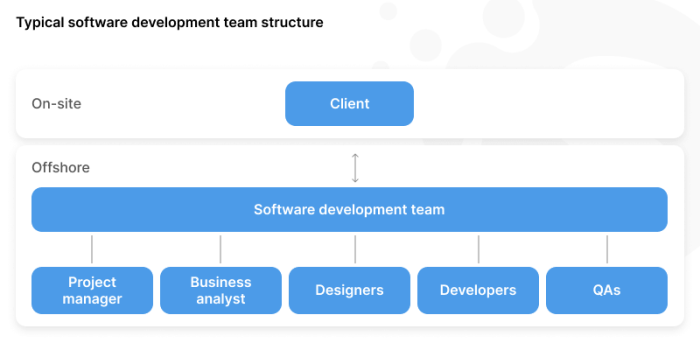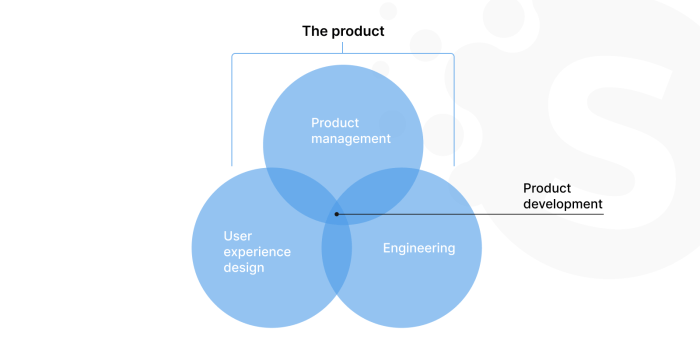In today’s globally interconnected world, businesses are constantly seeking efficient and cost-effective ways to build and maintain their software applications. Nearshore software development has emerged as a compelling solution, offering a compelling blend of proximity, cultural understanding, and cost advantages compared to outsourcing to far-flung locations. This comprehensive guide delves into the intricacies of nearshore software development teams, exploring their benefits, challenges, and best practices for successful implementation.
What is Nearshore Software Development?: Nearshore Software Development Team
Nearshore software development involves outsourcing software development tasks to a company located in a geographically proximate country. Unlike offshore outsourcing, which often involves significant time zone differences and cultural barriers, nearshore partners are typically situated in a neighboring country or region, minimizing these challenges. This proximity translates to improved communication, easier collaboration, and more streamlined project management.
Key Characteristics of Nearshore Teams:
- Geographic Proximity: Reduced travel time and simpler logistics.
- Similar Time Zones: Facilitates real-time communication and collaboration.
- Cultural Affinity: Often shares similar business practices and cultural norms.
- Cost-Effectiveness: Lower labor costs compared to onshore development, but higher than offshore.
- Improved Communication: Easier and more frequent communication with the development team.
Benefits of Choosing a Nearshore Software Development Team
The advantages of partnering with a nearshore software development team are numerous and often outweigh the potential drawbacks. These benefits contribute to increased efficiency, reduced costs, and improved project outcomes.
Enhanced Communication and Collaboration:
The reduced time zone differences and often shared language significantly improve communication. This leads to quicker responses, fewer misunderstandings, and a more collaborative working environment. Regular in-person meetings become more feasible, strengthening relationships and fostering a sense of teamwork.
Cost-Effectiveness:
While not as dramatically cost-effective as offshore development, nearshore outsourcing still offers considerable savings compared to building an in-house team. This cost reduction stems from lower labor costs in many nearshore locations, without sacrificing the quality of work or the ease of communication.
Faster Time to Market:
Improved communication and collaboration directly contribute to faster project completion times. The streamlined workflow and reduced delays inherent in nearshore partnerships allow businesses to launch their software products and services more quickly, gaining a competitive edge in the market.
Access to Specialized Talent:
Many nearshore locations boast a skilled and readily available pool of software developers with expertise in various technologies. This access to specialized talent can be invaluable for projects requiring specific skills or technologies, enabling businesses to leverage the best expertise for their needs.
Stronger Intellectual Property Protection:
Compared to offshore outsourcing, nearshore development often presents a lower risk of intellectual property theft. The closer proximity and established legal frameworks in many nearshore locations provide a greater degree of security for sensitive information and proprietary code.
Challenges of Nearshore Software Development
Despite the numerous benefits, it’s crucial to acknowledge the potential challenges associated with nearshore software development. Understanding these challenges allows businesses to proactively mitigate risks and ensure a successful partnership.
Language Barriers:
While many nearshore locations share a common language with their client countries, subtle language differences can still lead to misunderstandings. Clear communication protocols and regular check-ins are essential to minimize this risk.
Cultural Differences:, Nearshore software development team
Even with geographic proximity, cultural nuances can affect communication styles and work practices. Building strong relationships and understanding cultural differences are vital for effective collaboration.
Legal and Regulatory Differences:
Differences in legal frameworks and regulations between countries can complicate contract negotiations and intellectual property protection. Thorough due diligence and legal counsel are essential to mitigate these risks.
Time Zone Differences (Minor):
While generally less significant than offshore outsourcing, minor time zone differences can still impact real-time communication and coordination. Careful planning and flexible scheduling can help minimize disruptions.
Choosing the Right Nearshore Software Development Team
Selecting the right nearshore partner is crucial for project success. Consider these factors when evaluating potential partners:
Technical Expertise:
Assess the team’s proficiency in the required technologies and their experience with similar projects. Review their portfolio and client testimonials.
Communication Skills:
Evaluate their communication style and responsiveness. Effective communication is paramount for a successful nearshore partnership.
Cultural Compatibility:
Consider the cultural alignment between your company and the potential partner. Shared values and work ethics can contribute to a more harmonious collaboration.
Project Management Capabilities:
Assess their project management methodologies and their ability to manage projects effectively, adhering to timelines and budgets.
Security Measures:
Inquire about their security protocols and measures to protect sensitive data and intellectual property.
Best Practices for Nearshore Software Development
To maximize the benefits and minimize the challenges, adopt these best practices:
- Establish Clear Communication Channels: Implement regular meetings, project management tools, and clear communication protocols.
- Define Roles and Responsibilities: Clearly Artikel the responsibilities of both teams to avoid confusion and overlap.
- Develop a Comprehensive Contract: Include detailed specifications, payment terms, intellectual property rights, and dispute resolution mechanisms.
- Regularly Monitor Progress: Track project progress closely and address issues promptly to avoid delays.
- Build Strong Relationships: Foster trust and rapport between teams through regular communication and collaboration.
Frequently Asked Questions (FAQ)
- Q: What are the best countries for nearshore software development? A: Popular nearshore destinations include Mexico, Canada, and countries in Latin America.
- Q: How much does nearshore software development cost? A: Costs vary depending on location, skill level, and project complexity. Generally, it’s less expensive than onshore development but more expensive than offshore.
- Q: What are the key differences between nearshore and offshore development? A: Nearshore development involves closer geographic proximity, leading to improved communication and collaboration, while offshore development offers lower costs but often comes with communication and cultural challenges.
- Q: How can I find a reliable nearshore software development partner? A: Thoroughly research potential partners, review their portfolio, check client testimonials, and conduct interviews to assess their skills and capabilities.
- Q: What are the risks of nearshore software development? A: Potential risks include language barriers, cultural differences, minor time zone differences, and legal complexities. Proper planning and risk mitigation strategies are essential.
Conclusion
Nearshore software development offers a compelling alternative to traditional onshore and offshore outsourcing models. By carefully selecting a partner, establishing clear communication protocols, and implementing best practices, businesses can leverage the benefits of nearshore development to achieve cost savings, faster time to market, and access to specialized talent. Understanding the potential challenges and proactively mitigating risks are key to ensuring a successful and mutually beneficial partnership.
References
While specific URLs are not included to avoid link rot, readers are encouraged to search for reputable sources on topics like “Nearshore Software Development Best Practices,” “Nearshore Software Development Cost Comparison,” and “Nearshore Software Development Legal Considerations” on search engines like Google Scholar and reputable technology publications.

Source: softermii.com
Call to Action
Ready to explore the advantages of nearshore software development for your next project? Contact us today for a free consultation and let’s discuss how we can help you build a high-performing, cost-effective software development team.
Helpful Answers
What are the key benefits of using a nearshore team?
Reduced costs compared to onshore development, improved communication and collaboration due to proximity, faster project turnaround times, and easier management of the development process.
How do I choose the right nearshore partner?
Consider factors like location, team expertise, communication capabilities, project management methodologies, security protocols, and client testimonials. Thorough due diligence is crucial.

Source: softermii.com
What are the potential drawbacks of nearshore development?
While generally positive, potential challenges include slight cultural differences, potential language barriers (though often less pronounced than with offshore teams), and the need for careful contract negotiation and management.
What is the difference between nearshore and offshore development?
Nearshore development involves working with teams in geographically closer regions, often sharing similar time zones and cultural aspects. Offshore development involves teams located in distant countries with potentially significant time zone differences and cultural variations.
